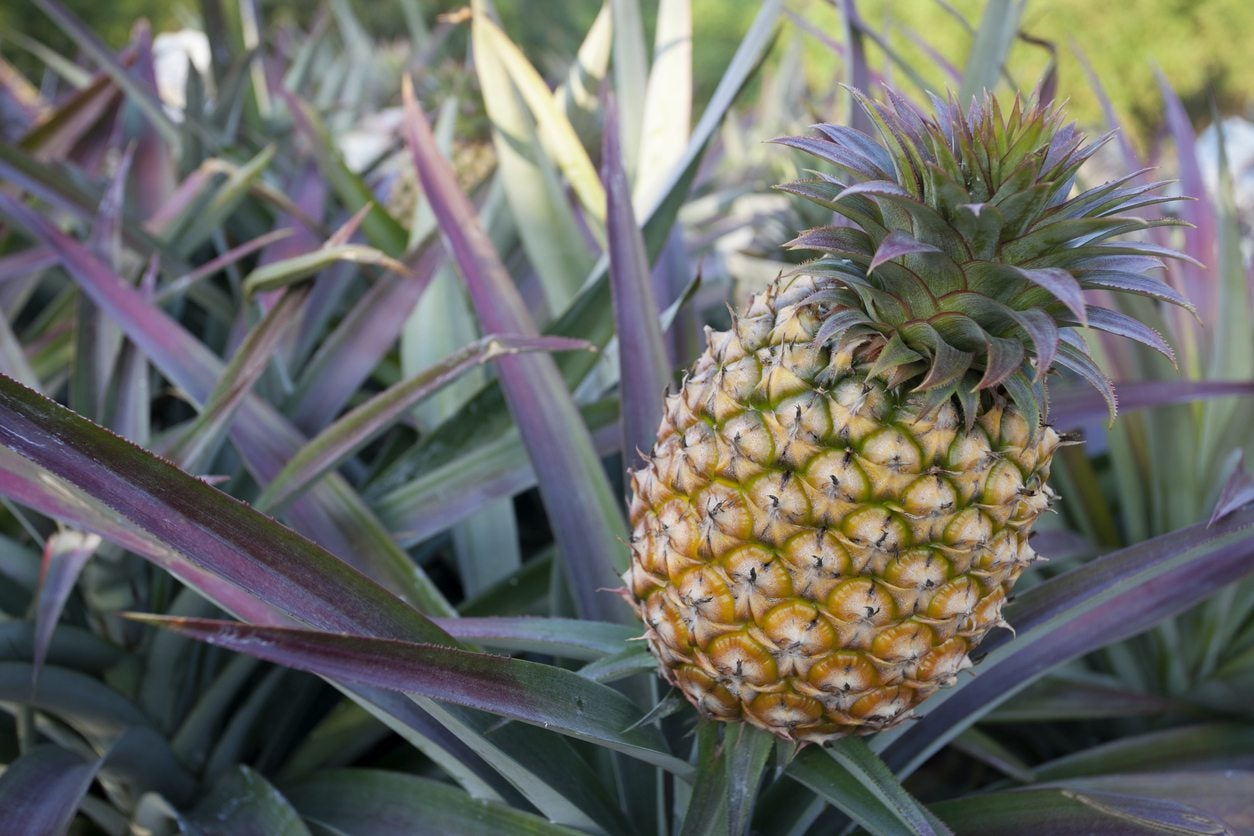
Have you ever wondered about pineapple plant fruiting? I mean if you don’t live in Hawaii, chances are good that your experience with this tropical fruit is confined to purchasing it from the local supermarket. For instance, how often does pineapple bear fruit? Do pineapples fruit more than once? If so, does the pineapple die after fruiting?
How Often Does Pineapple Bear Fruit?
Pineapple (Ananas comosus) is a perennial plant that flowers once and produces a single pineapple. So yes, the pineapple does die after fruiting, sort of. Pineapple plants do not fruit more than once-- that is, the mother plant doesn’t fruit again. Commercial growers’ favored cultivar is ‘Smooth Cayenne,’ grown for its flavorful, seedless fruit and lack of spines.
Commercial pineapple plant fruiting is grown on a two to three year fruit crop cycle that takes 32 to 46 months to completion and harvest. Pineapple plants do indeed die after this cycle, but they produce suckers, or ratoons, around the main plant while it is flowering and fruiting.
The mother plant slowly dies once fruiting is completed, but any large suckers or ratoons will continue to grow and eventually produce new fruit. A member of the Bromeliaceae family, pineapple plants react just as ornamental bromeliads. They die back and produce yet another generation.
Since tropical pineapple only grows outside in USDA zones 11 and 12, most folks grow them as houseplants. If grown outdoors, the ratoons can be left to continue to grow naturally, but those grown in containers will become crowded, so they are usually repotted once the mother plant begins to die back.
These ratoons are little plantlets that grow between the leaves of the mature pineapple plant. To remove the ratoon, just grasp it at the base and twist it gently from the mother plant.
Plant it in a 4 gallon (15 L.) pot filled with moist, well-draining soil. If the suckers are left on the mother plant, the result is called a ratoon crop. Eventually, this crop will mature and produce fruit, but the plants crowd each other out and compete for nutrients, light, and water.
Sign up for the Gardening Know How newsletter today and receive a free copy of our e-book "How to Grow Delicious Tomatoes".
The result is a second crop of pineapple that is much smaller than that from the mother plant.

Amy Grant has been gardening for 30 years and writing for 15. A professional chef and caterer, Amy's area of expertise is culinary gardening.
